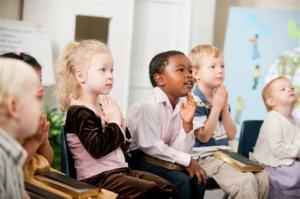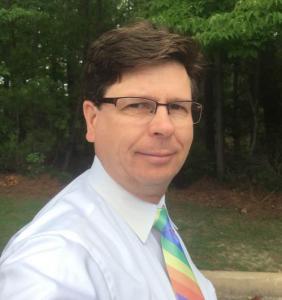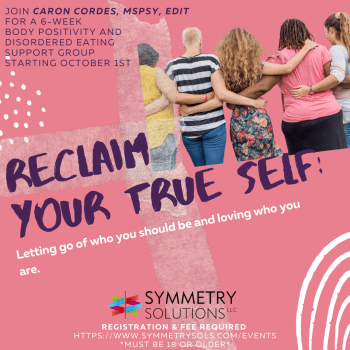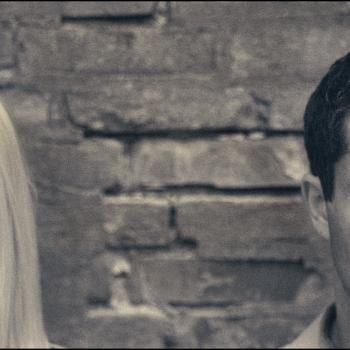 A HUGE thank you to Timothy Birt for being willing to do this work and sharing it here on The Mormon Therapist! I cannot state strongly enough what an important document this is. Please take note of the many things we can do to lower the risk of abuse taking place in the context of our own ward and stake homes.
A HUGE thank you to Timothy Birt for being willing to do this work and sharing it here on The Mormon Therapist! I cannot state strongly enough what an important document this is. Please take note of the many things we can do to lower the risk of abuse taking place in the context of our own ward and stake homes.
How the Church Approaches Abuse – A Professional’s Response
By Timothy Birt, MS, LPC, LMFT
The Mormon News Room recently released a resource entitled “How the Church Approaches Abuse.”
How the church approaches abuse.
As an LDS member and a professional counselor with experience as a child abuse treatment professional and who has posted suggestions on how the LDS Church could better protect children; I HIGHLY OBJECT to the Mormon Newsroom’s recently released “How the Church Approaches Abuse” which claims “We are unaware of any organization that does more than the Church to stop and prevent abuse.” This claim that the LDS Church’s policies and practices are equal to or superior to best practices of religious institutions to prevent child abuse is demonstrably false. It is a bold statement with some positive sentiments, but is also a misleading assessment of the Church’s child protection policies and a disappointing response to the movement in the LDS Church membership to Protect LDS Children.
The one commitment I believe we as Mental Health Professionals and Church members should hold the Church and its local leaders to is as stated in the article: “As we see or learn of ways to more effectively decrease the potential for abuse, we implement them.” With this promise by the LDS Church in mind, I offer the following assessments and recommendations.
The following are shortcomings in the LDS Church’s current youth protection policies:
1) The LDS Church does not follow basic youth protection standards of BSA and other youth serving organizations in that it mandates and allows Bishops and Church leaders to meet one-on-one with youth behind closed doors and discuss sexual matters.
This practice does not follow best practices of other churches and organizations and contradicts the statement in “How Mormons Approach Abuse” where it states “No one would knowingly put his or her own children or neighbor’s children in a situation where they would be susceptible to abuse.” Sam Young has documented hundreds of cases where LDS parents knowingly allowed bishops and other leaders to interview their children alone and the children have been not only susceptible to abuse, but were abused or mistreated by the Church leader. As “Even one case is too many,” we call on the LDS Church to end one-on-one youth interviews between adult leaders and children under the age of 18 behind closed doors.
2) The LDS Church does NOT perform any background checks of its own for adult leaders assigned to work with children or youth or background checks for Bishop’s or counselors or Stake leaders who interview children alone.
Criminal and child abuse registry background checks are a standard best practice for Churches and organizations serving youth. This is clearly an area where the Church does not meet the standards of youth protection and an area where, we as members and mental health professionals can ask the Church and local leaders to make good on its commitment in “How Mormons Approach Abuse” to “As we see or learn of ways to more effectively decrease the potential for abuse, we implement them.” So we call for criminal and child abuse registry background checks on all Bishoprics, Stake presidencies, Young Men’s and Young Women’s leaders and teachers, Seminary teachers, Primary Presidencies, Primary teachers, Nursery workers, and nursery volunteers, 8A leaders and teachers, and Cub Scout and Boys Scout Leaders and volunteers, and any other adult member who will be assigned to work with persons under the age of 18.
3) The LDS Church has no standardized youth protection training for adults working with children nor adult leaders.
Again the Church falls far short of standard best practices in youth protection and its commitment to implement more effective ways to decrease the potential for abuse. We call on the LDS Church to implement youth protection training for all adults who work with children or lead those members who do interact with children in a church environment and to make completion of such training as a requirement prior to beginning their work with children. Additionally we call for such training to be repeated regularly and for a process of tracking which adults have completed the training and which have not completed or updated the training.
4) The LDS Church claims to have policies requiring two-deep leadership for male adults working with youth and for “youth activities,” but this policy is not widely known and is not followed rigorously, nor is there any monitoring program or established system of reporting and correcting breaches in policy. The policy also does not uniformly apply to women working with youth or Bishops or Church leaders.
Again here the LDS Church falls far short of its claim to that “We are unaware of any organization that does more than the Church to stop and prevent abuse” in the document referenced above. Policy requiring two-deep leadership are a standard tenant of youth protection policies across organizations and has been in place in BSA for years. These policies should be publically available, implemented, and monitored. Note that male primary teachers are not supposed to teach primary classes alone with children, but Bishops and Young Men’s leaders routinely are alone with youth and lack two-deep leadership. Similar breaches of two-deep leadership are routinely seen in primary with women and in nursery and in young women’s programs. We call on the LDS Church to consider implementing a two-deep adult leadership policy uniformly across all levels of adult interaction with youth from nursery volunteers to Bishops and General Authorities. We ask the LDS Church to train and monitor this policy and report and address lapses in following the policy. This policy is clearly an effective way to “decrease the potential for abuse.”
5) No uniform training exists for Bishop’s and Stake leaders on reporting child abuse, maintaining confidentiality, or boundaries on counseling, or understanding child abuse and trauma.
The Church’s Professional Help Line is a helpful resource, but it doesn’t replace the need for competent training on reporting child abuse, maintaining confidentiality, and understanding the impact of child abuse and trauma on how Church teachings and policies may be experienced by victims and the potential of producing unintended consequences. Church leaders have often failed to report child sexual abuse as required by state law and need to understand that they are personally criminally and civilly responsible to personally report child sexual abuse discovered from a victim. Clergy reporting requirements are complicated and often are not followed per state law. In addition many Bishops break confidentiality regularly and need to know they may be civilly liable for doing so. Church leaders are largely untrained volunteers with little to know training or expertise in child development, sexuality, child abuse, marital relationships, counseling, or trauma. Bishops should not provide counseling, teaching training or advice to children or parents but should refer children, youth and parents to experienced, licensed, counselors, therapists, psychologists, and medical doctors when addressing such issues. We call on the LDS Church to implement competent training for Church leaders in reporting child abuse, maintaining confidences, and understanding trauma and abuse to supplement the help available on the professional help line. We call on the LDS Church to train Bishops to make appropriate referrals to licensed therapists and professionals and for the LDS Church to financially support treatment for children and members impacted by important issues.
6) As evidenced by stories collected by Sam Young and others, the LDS Church has an extensive problem with inappropriate and abusive behavior by Church leaders toward youth. The Church is not reaching out to acknowledge much less address the problem.
We call on the LDS Church to acknowledge, address, and correct inappropriate and abusive behaviors of Church leaders and teachers toward youth.
7) The Church does not have a panel of child abuse professionals and victims of abuse advising its policies and helping the Church address past mistakes and trauma inflicted by Church leaders on children and adults.
If the Church has such an advisory panel, it should make that fact public. If not, we call on the LDS Church to consider creating such an advisory panel and making its findings and recommendations available to Church members and to the public at large as well as the Church’s response to such recommendations. Again this is a best practice for organizations who have had complaints of abuse and policies that have not effectively prevented abuse in the past.
8 ) The legal and professional support for Church leaders having questions about reporting abuse often referred to as the “Professional Help Line” has been seen in some cases as attempting to protect the Church’s interests ahead of Victim’s interests.
In the Mormon Newsroom release “How Mormons Approach Abuse” the Church commits “…our first priority is to help the victim and stop the abuse.” We ask the Church to ensure that helping the victim takes priority before protecting the Church and leaders from liability. In addition we ask the Church to consider not placing gag orders on any member involved in a legal settlement with the Church over issues of abuse or as a criteria for funding treatment for victims.
9) Efforts to retrofit buildings to provide for windows into youth serving classrooms often don’t extend to teens and Bishop’s offices.
The Church indicates plans to put windows in “All Classrooms” and this is a good effort. We call on new construction and retrofits to include all rooms where youth may enter including Bishop’s offices and Stake President’s offices.

10) The LDS Church teachings of past leaders who have implicated victims as responsible partially for their abuse and encouraged members that it would be better to lose their lives than to be a victim of rape or abuse have not been formally dismissed or abandoned and current church publications still contain references to teachings of this sort that are fundamentally harmful to children and members.
In “How the Church Approaches Abuse” the Church states that “Victims are innocent,” yet culture and even current Church manuals and online resources focus still often focus some blame or responsibility on victims and teach youth about dressing modestly and insinuate the need for repentance for sexual victimization. Many stories collected by Sam Young indicate Church leaders have questioned victims about their own sexual response to abuse or responsibility in sexual assaults. Spencer W. Kimball’s Miracle of Forgiveness book and “Love vs. Lust” talk are frequently referenced in Church culture and some Church publications/resources and Church Leaders have not overtly contradicted and discouraged harmful teachings they contain. We call on local leaders and Church leaders to refrain from using harmful previous teachings and to denounce such teachings. Instead we encourage Church leaders to actively teach about responsibility, respect and consent. Consent is what victims of child abuse lack. Giving them the ability to say “no” to meeting with a Church leader one-on-one is respecting their consent. Allowing a child to not choose to hug a relative or church teacher is reinforcing their ability to consent in how what they are required to do. By disregarding consent and continuing shaming victim-blaming concepts, we increase the risk of abuse for our children.
11) The LDS Church is taking actions that may actively resist efforts requesting it to change its policies on one-on-one closed door interviews of youth about sexual matters by adults. It has resisted calls to find alternative methods to guide youth and to encourage youth to abide by standards expected of youth. In fact the LDS Church may be one of the only religious organizations that allows adult – youth one-on-one closed door meetings that discuss sexuality. The LDS Church is not setting an example seeking to listen to members and concerned adults regarding problems with its youth protection practices, but instead is seeking to silence those who request change.
This reaction at the local and general Church level is not consistent with the aspirations the Church set forth in “How the Church approaches Abuse.” It is clearly not a best practice that other Churches should emulate. We call on the Church to enter into dialogue with its members, with child abuse professionals, with victim advocacy groups, with victims, and with its critics who want to make the LDS Church safer for children, to enhance protective practices, and to acknowledge and help victims of abuse enabled by the Church and its culture, practices and policies. We call on local and general Church leaders to seek alternatives to current practices to allow the Church to retain pastoral relationships with its youth while protecting youth from worthiness interviews conducted one-on-one with a Church leader. See suggestions for alternatives to one-on-one interviews in the following document: https://invisiblescubit.wordpress.com/2018/02/04/great-suggestions-to-protect-our-children/ We call on Church leaders to stop asking youth about masturbation or requiring repentance for such a practice which is not addressed in current Church handbooks and to enter into a dialogue about how “chastity” and “modesty” can be discussed from a normative child development perspective and be addressed in partnership with parents and professionals.
12) The LDS Church is not proactively addressing alienation of LGBTQ youth, youth LGBTQ suicide, suicide and mental health challenges of youth overwhelmed by shame from LDS teachings on sexuality, sexual orientation, gender, and chastity.
These issues are related to abuse as internalized unaccepting intolerant Church teachings have resulted in children being ostracized by parents, mental health disorders, self-hatred, shame, and suicide. Such results are inconsistent with the stated objectives of the Church. We call on the Church to address these problems with the impacted communities and publicly find ways to reduce the impacts on members and youth.
13) The LDS Church has not made efforts to implement BSA Youth Protection Standards for older male youth 14-18 who are now not involved in scouting and has never applied BSA youth protection standards to adults working with girls or young children.
In 2018, with the Church withdrawing from Venture Scouting, many young men’s activities will now be done outside the policies and guidelines of BSA Youth Protection and Guide to Safe Scouting. The LDS Church has yet to implement policies, youth protection standards, safety guidelines, and resources to protect young men as were required by BSA for Venture related activities and thus our young men may be at greater risk of accident, or abuse by the lack of such guidelines, policies and required adult and youth training. Note that Young Women’s activities have NEVER had the benefit of youth protection guidelines or standards similar to Safe Scouting. We call on the LDS Church to retain Venturing youth protection standards, training requirements and Guide to safe scouting standards for male activities outside of Scouting or Venturing until the Church rejoins Venturing or establishes its own equivalent standards.
14) The LDS Church provides no bystander training or child safety training for adult members or children.
Bystander training is an emerging practice training willing adults to understand youth protection guidelines and good boundaries and to be trained to intervene or seek assistance when they see situations involving others where child or adult safety or boundaries are being crossed. Again, here is another practice the Church has not adopted. We call on the LDS Church to explore and develop bystander training or similar training for all adult members as part of its standard Church curriculum and to consult with professionals who show evidenced based results with such trainings.
15) The LDS Church has no formal process publically stated policy, practice or effort to hear, honor, acknowledge, and admit to problems its teaching, practices, and mistakes where children were impacted.
The Church states a zero tolerance policy and has implemented some systems to track and prevent abusers from holding callings related to youth in other wards after being determined to be an abuser. These are good efforts. However, the Church and many of its leaders view problems as exceptions and rare. The Church has an internal process that is not publicly available for complaints about leadership to be forwarded to the Stake President and if necessary to a General Authority to be addressed. But this process has little transparency and those following up on the complaint are directly responsible for the member’s membership, discipline, and activity privileges. Too often, concerns are considered criticism and seen as not supporting the “Brethren” and the person concerned or blowing a whistle feels silenced or is actually disciplined for raising their concern or complaint. Many members have taken to heart words of a Church leader that the LDS Church does not apologize, and they feel this is in opposition to Church doctrine about repentance. We call on the LDS Church to create a process where members can raise concerns about the behavior of Church leaders towards children and themselves and these complaints or concerns when serious are evaluated by leaders or groups of professionals that are outside of the member or child’s priesthood leadership lines of authority so that bringing complaints or concerns cannot be met by retaliation and adopt policies that are publically available that outline the grievance process that insure that priesthood leaders are not able to silence whistle blowers or concerns by threatening the person’s complaining’s membership or ability to participate in the Church and are not retaliated against for brining complaints or concerns. Youth not agreeing to a one-on-one interview should not be restricted from advancing in the priesthood or temple work or a calling. Members claiming a leader to be using unrighteous dominion or asking inappropriate questions to a youth should have a clearly defined external process to complain and have those complaints taken seriously.
16) The LDS Church’s youth protection policies are significantly less comprehensive than the standards of many other Churches.
We request formal dialogue by the Church with those child abuse professionals and mental health professionals who can help the Church implement its sentiments expressed in “How the Church Approaches Abuse” and to actually implement best practices to prevent and address child abuse and to truly protect LDS children. I have provided links below to a variety of youth protection policies by other churches that the LDS Church and local leaders should consider in improving the Church’s youth protection policies. We formally request that changes to policies be made with the input of child abuse professionals, organizations dedicated to preventing and addressing abuse (I would gladly provide a list), mental health professionals, victims advocacy groups, victims, parents, and children. A review of the policies of other churches will quickly show how much work the LDS Church has to do to merit the claim made in “How the Church Approaches Abuse.” Again we ask that the process and policies be publicly available, involve input, be ongoing, and be implemented across the Church in a culturally competent manner.
On behalf of LDS parents & children,
Timothy Birt, MS, LPC, LMFT
Licensed Professional Counselor
Licensed Marriage and Family Therapist
About the contributor: Timothy Birt, MS, LPC, LMFT has worked as the Executive Director of two Children’s Advocacy Centers and has worked as a professional in the field of addressing child abuse for 14 years. He has provided mandated reporter of child abuse training for over a decade to over 10,000 mandated reporters. He has been involved with agencies and organizations working to prevent and treat child abuse. He is now in private practice as a therapist and treats victims of abuse and sexual assault and other mental health issues.
See the following resources:
Protect LDS Children
http://protectldschildren.org/
Recommendations for change:
https://invisiblescubit.wordpress.com/2018/02/04/great-suggestions-to-protect-our-children/
Other church’s youth protection policies:
Community of Christ
http://www.cofchrist.org/children-and-youth-worker-registration
http://www.cofchrist.org/child-protection-training
Episcopal Church
Presbyterian policy on Child and Youth Protection.
http://www.fpcgreensboro.org/child-and-youth-protection-policy
United Church of Christ
http://www.ucc.org/ministers_safe
The United Methodist Church has an extensive website Safe Sanctuary for children and adults:
https://www.umcdiscipleship.org/resources/safe-sanctuaries-general-guidelines-starter-documents
Catholic Diocese of Salt Lake
Natasha Helfer Parker, LCMFT, CST runs an online practice, Symmetry Solutions, which focuses on helping families and individuals with faith concerns, sexuality and mental health. She hosts the Mormon Mental Health and Mormon Sex Info Podcasts, writes a regular column for Sunstone Magazine, is the current president of the Mormon Mental Health Association and runs a sex education program, Sex Talk with Natasha. She has over 20 years of experience working with primarily an LDS/Mormon clientele.












